Tis the season to be spooky! I have always considered poison rings to be a dark and mysterious item from the past though have never been able to learn much about them. Well, I know now that they have fairly ancient roots that extend to the present day, something that we don’t see very often on the blog. What is really fun is that the poison rings of centuries ago look so similar to those being made today.
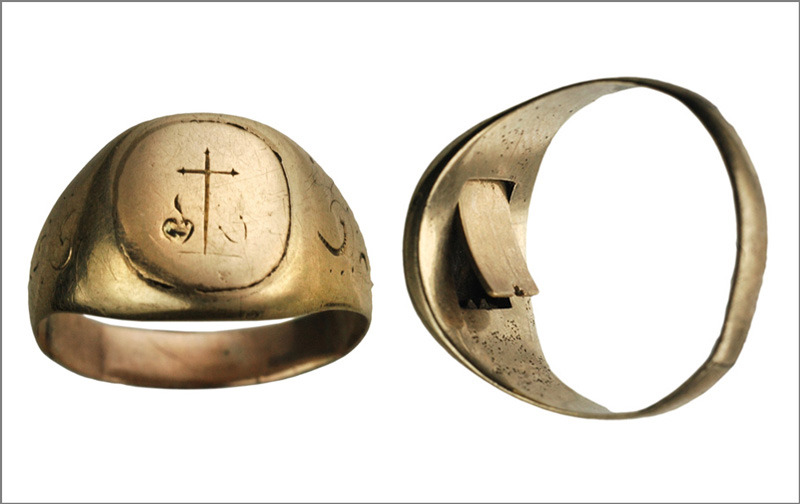
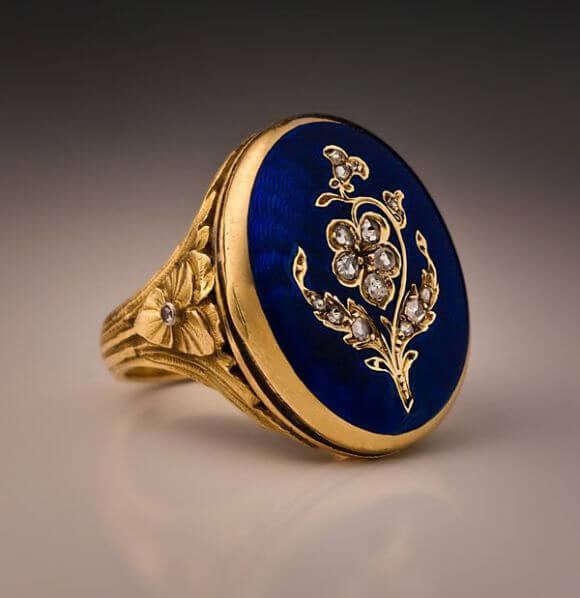
The poison ring is born…to help kings die
Most of the sources I read for the post trace the origin of poison rings to ancient Rome or Greece. But rather than being used to harm rivals, the evidence points toward the availability of poison at the snap of a finger as a means to end one’s own life. Given the violence that would be used by warring leaders and the use of torture, it was often considered a more pleasant fate than being captured. Says the Gemological Institute of America:
“Ancient Romans sometimes used poison rings to commit suicide when a painful death was unavoidable. The historian Pliny, the Elder (23-79 CE) recounts how a Roman government official escaped torture by taking a bite out of his poison ring (a thin shell was the container for the poison). The teenaged Emperor Heliogabalus (203 CE – 222 CE), feared because of his cruelty and notorious for his debauchery, wore a poison ring – but was assassinated before he could ingest its contents.”
While references to the use of poison rings may date to only 100 CE, one of the oldest surviving is from 14th century Bulgaria. Discovered in 2013, the ring had a fairly bulky top and was believed to be used for violent purposes. Archaeologists theorize that it belonged to Dobrotitsa, the head of an influential family in the region. Dobrotitsa had an unfortunate feud with his own son and may have kept poison handy in an attempt to be done with him. Read more here.
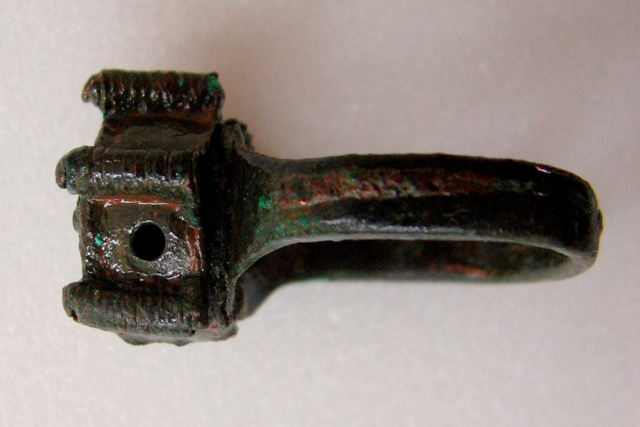
Poison rings were most widely used in the 16th and 17th centuries. Famous instances remembered today include the Affair of the Poisons that took place in the court of Louis XIV and of course, Lucrezia Borgia. It should be pointed out, however, that accounts of Lucrezia Borgia poisoning anyone remain unsubstantiated, though it is known that her brother Cesare owned a poison ring.
Read more: The poison ring of Cesare Borgia, son of a pope and assassin in the name of the father.
Mysterious, but not always deadly
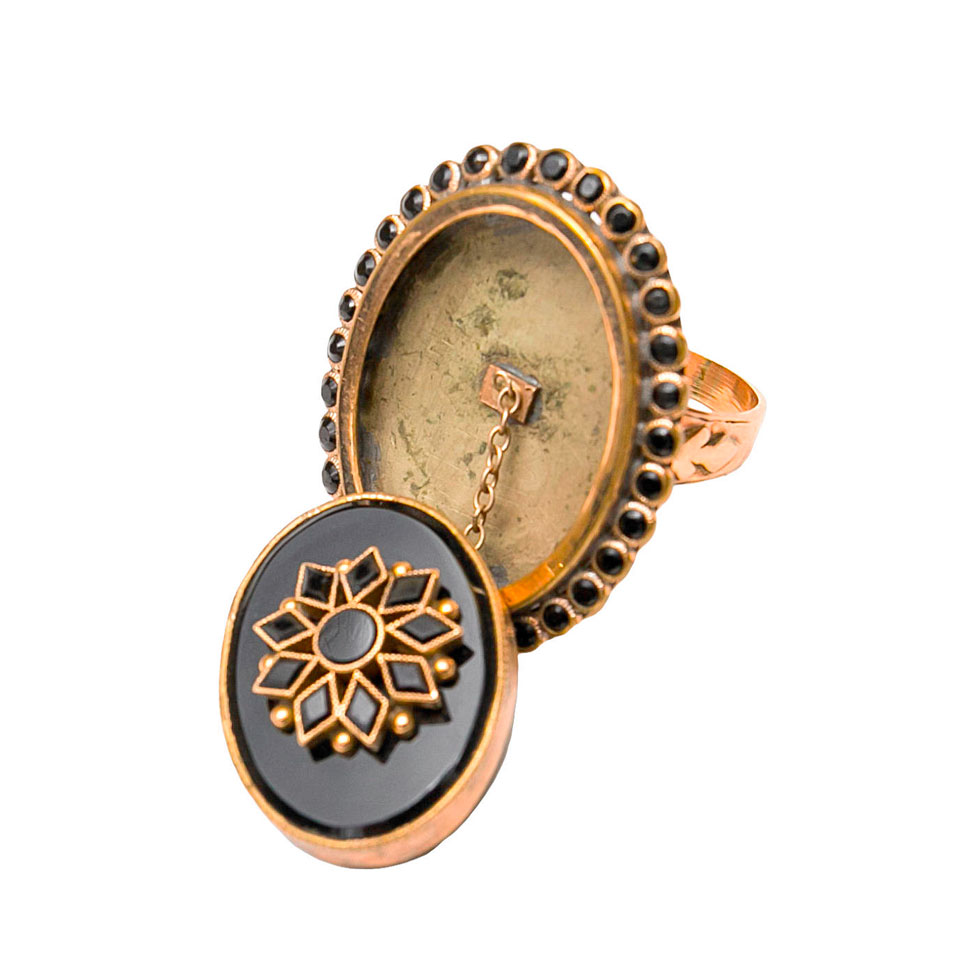
Something that made my research for this post a challenge is that poison rings go by so many different names and have many different purposes. In my reading the past week I have seen them referred to as:
Signet rings
Vessel rings
Mourning rings
Compartment rings
Locket rings
In truth, while the term “poison ring” lives on, rings with space to conceal a second object have likely been used mostly for less-nefarious purposes through time. For instance, in the 19th-century individuals often kept a perfume-soaked piece of cloth in such a ring to hide the unpleasant smells of the streets, similar to the vinaigrettes I mentioned in my post on dressing cases.
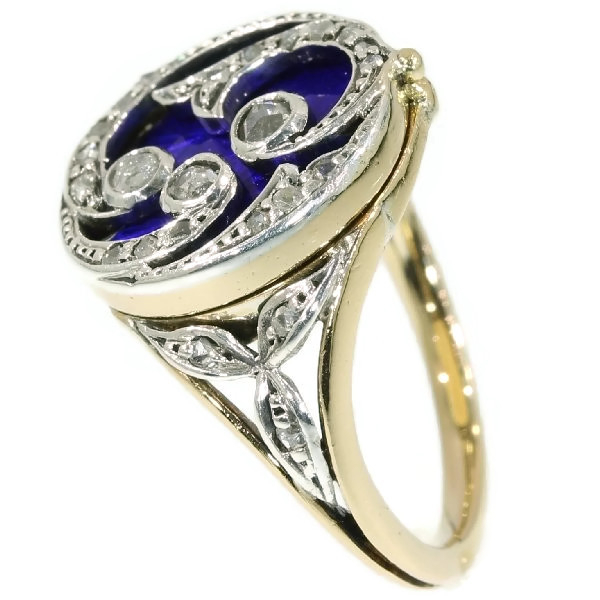
Locket rings, on the other hand, were made to open and reveal the portrait of a loved one. Some charming examples of these rings exist today. Most notable perhaps is the one below that belonged to Queen Elizabeth I and held a portrait of her mother, Anne Boleyn.
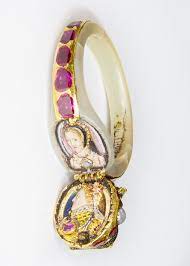
Mourning rings made with a compartment, on the other hand, were designed to hold a locket of hair belonging to a passed loved one. Mourning rings were more commonly made with a decorative front created using such hair, though some had an opening in the back to place the lock.

I have also read of poison rings being used to hold relics (even bits of teeth and flesh) and notes from lovers.
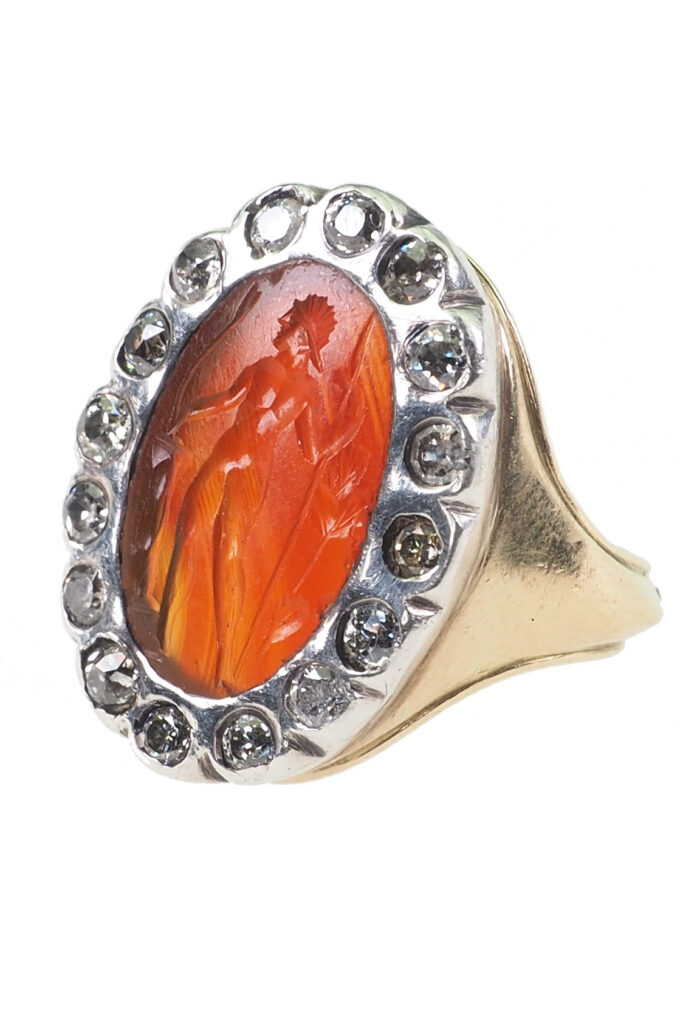
Rings to combat poison rings
Considering that poisoning sometimes took place using rings in previous centuries, I thought it was worth noting that other styles of rings were considered antidotes. This too is a tradition that has lived on, with the wide-spread popularity of precious stones and gems used for various healing purposes.
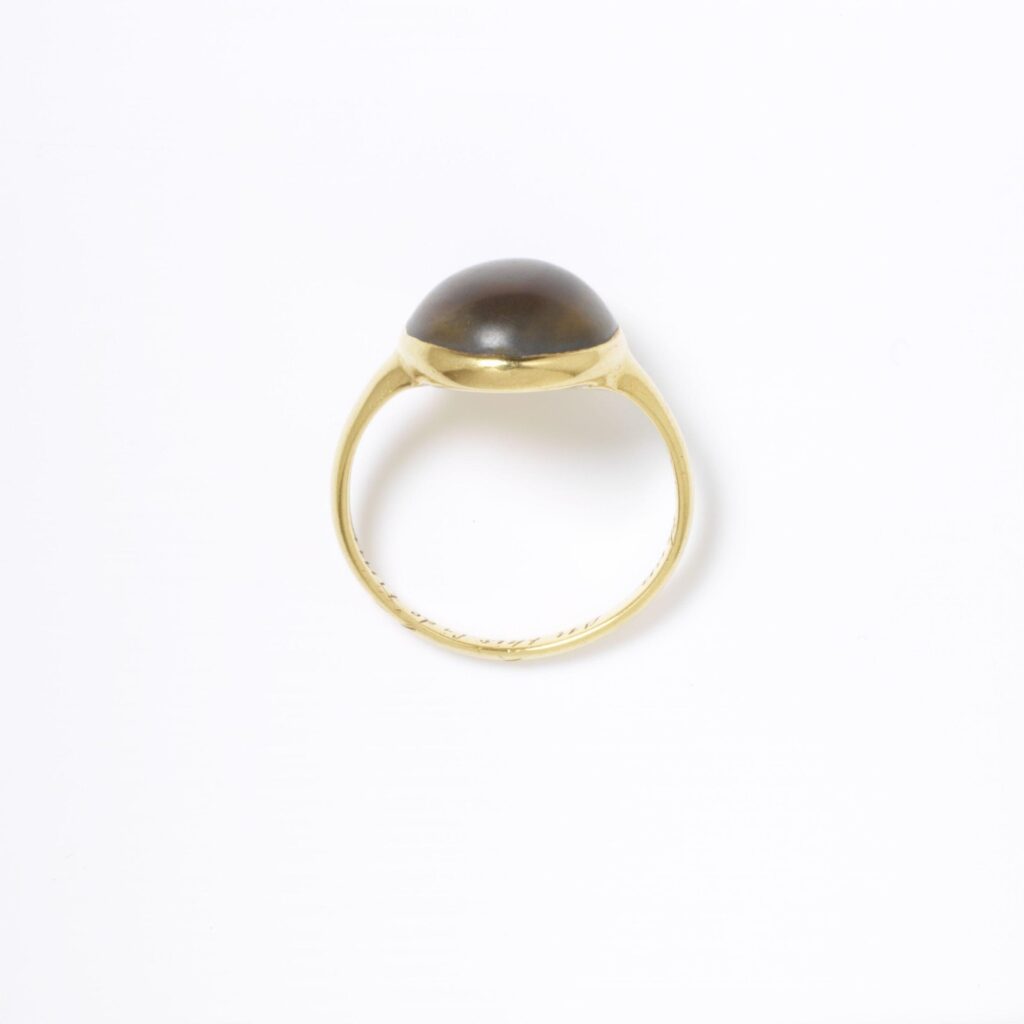
Various talismans and materials were used, some more in some centuries than others, to ward off various diseases or protect against poison. The ring directly above is made of toadstone, a popular option. Of the ring the Victoria & Albert Museum says:
“The round, brown toadstone, also known as ‘crapaudine’ or ‘crappot’, was believed to be effective against kidney disease and was a sure talisman of earthly happiness, according to Johannes de Cuba, writing in his Hortus Sanitatis (Garden of Health) in 1498. Wearers also believed that it would give off heat if exposed to poison. This was described by Fenton in 1569 “Being used in rings they give forewarning of venom”. In 1627, Lupton claimed that ‘A Tode stone (called Crapaudina) touching any part be venomed, hurte or stung with Ratte, Spider, Waspe or any other venomous Beasts, ceases the paine or swelling thereof’. It was also said to protect pregnant women from fairies and demons and to prevent their child being exchanged for a changeling.”
Likewise, rings etched with or made in the shape of scorpions were used in the 16th-19th centuries to protect again various poisons. https://www.vam.ac.uk/articles/a-history-of-jewellery/
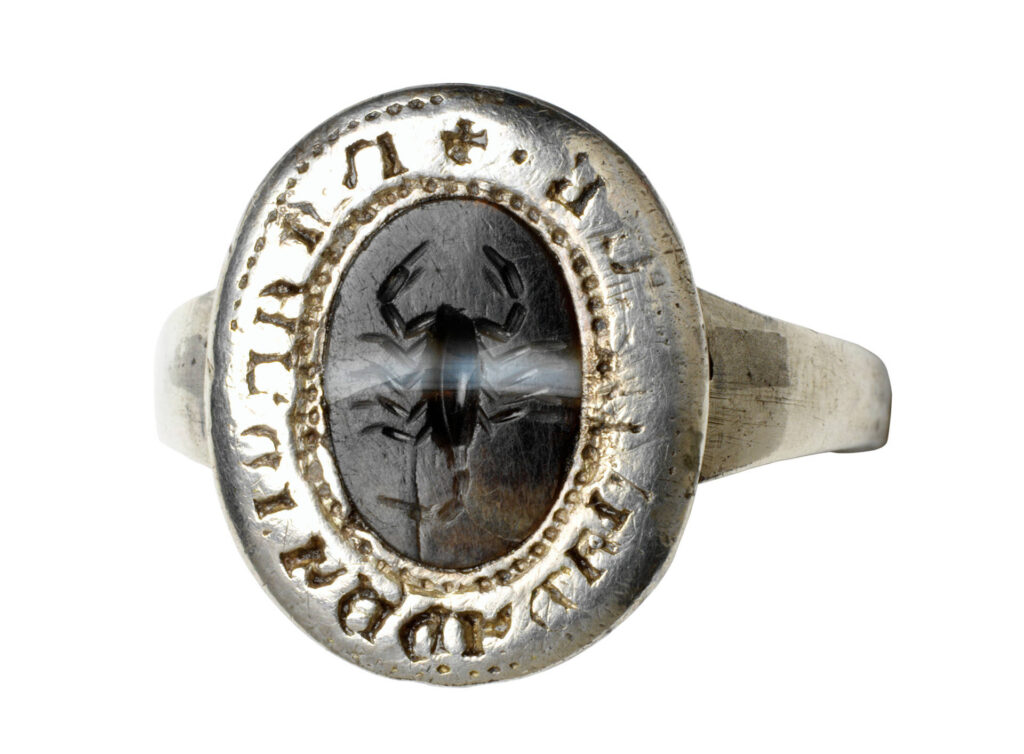
Love accessories? You may enjoy these posts:
Pioneer Clothing: Accessories Women Wore on the Frontier
Hair combs: practical and pretty
A short history of the hand muff, one of history’s cutest accessories














really great read. Thanks!
I have an old crucifix locket which slides open to reveal an empty chamber. I always assumed that it had contained poison, but after reading your post I wonder if it contained hair. It has been passed down through my family, but know nothing about it otherwise.
Thanks for your blog!